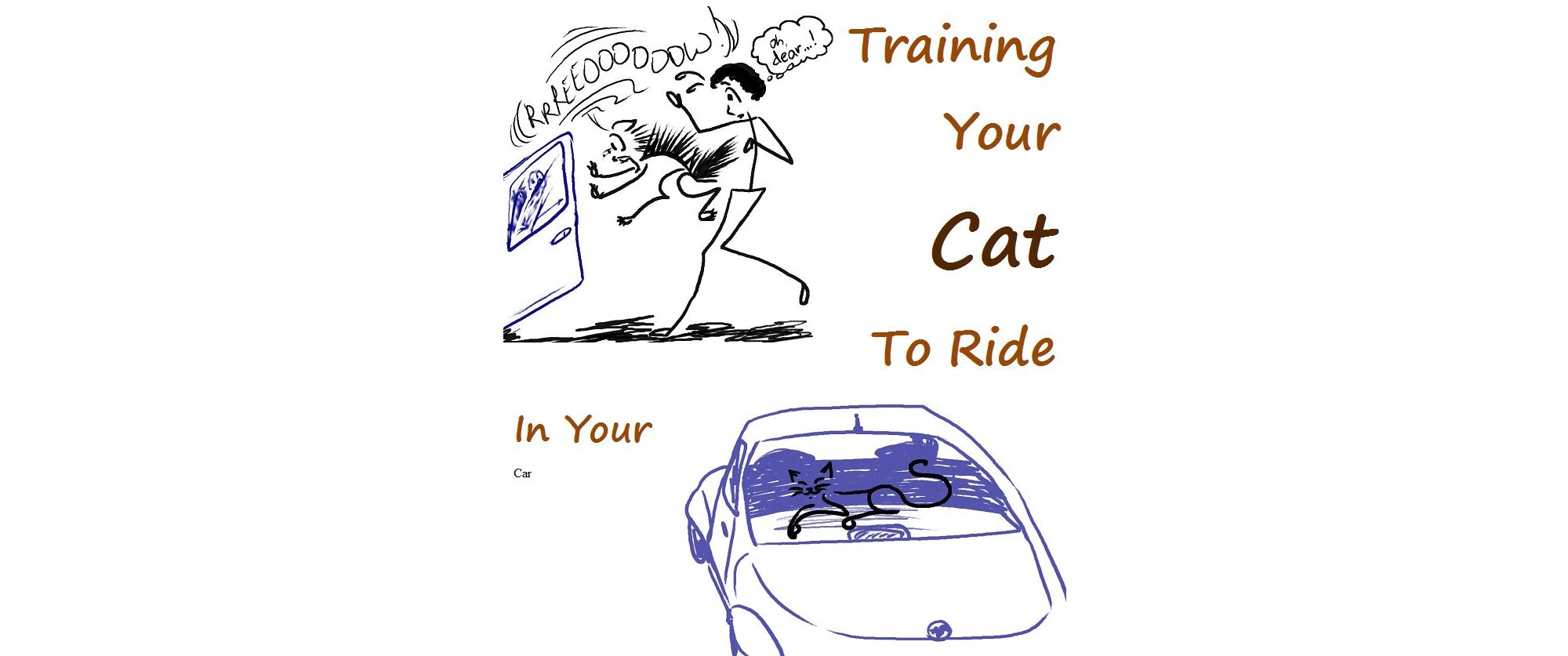Cats are very hard to handle when they are scared–and sticking them in a big metal monster that grumbles and roars at them is pretty much guaranteed to scare them. With those sharp claws and teeth, a scared cat can be quite dangerous. But if you can overcome your cat’s fear, it is quite possible she will come to love going for a car ride. It will take quite a bit of patience, but it will be worth it in the long run. There are occasionally cats who cannot tolerate riding in a vehicle because they get car-sick; just like some people do. Consult with your veterinarian if this is the case. There are medications that work well.
The first time you take your cat out to your car, make certain the engine stays off. Place your cat in a cat carrier, one big enough for your cat to turn around in, yet not so large it won’t fit in your vehicle. Keep the gate towards you. If she shows signs of nervousness, be sure to talk to her in a soothing tone, and move slowly. Carefully open your car door (the back door, if you have one) and gently slide the carrier in, pushing it through to the other side. Then get in with her, quietly closing the door–don’t let it slam, or you might scare your cat out of her wits. Just sit in the vehicle with her for a while, talking to her and maybe opening the carrier enough to reach in and pet her, as long as she doesn’t look like she’s so scared she might scratch or bite you. Remember to keep your movements slow and calm, and your voice soothing. Make sure she can see you at all times.
NOTE: If the weather is very cold out, you should run your car long enough to warm it up. Then turn it off before you bring your cat out.
After about five or ten minutes, open the door and take your cat back into the house. You’ll need to do this a few times, until your cat seems to stay calm through the whole procedure. You can increase the time a bit each session, though you shouldn’t need to sit in the car for more than twenty minutes at any time. If she seems to be calm and curious, you can open the carrier and let her come out and explore the inside of your vehicle. Don’t force her; let her come out at her own speed. If she doesn’t want to come out, just sit with her while the carrier door is open for a couple sessions. If you pry her out of the carrier before she’s ready, you might have a quite difficult getting her back into it when she’s overcome by fear and crams herself into a hiding spot in your car that you wouldn’t think a cat could possibly fit into.
NOTE: Be aware of every possible hiding place in the inside of your vehicle, such as under seats, or openings into your trunk. If there is an opening into the engine compartment, be absolutely certain you have it blocked off before you ever open that carrier’s door, or you might end up having to pry your cat out of your car’s engine!
Once she’s feeling secure enough in a car that’s turned off, the next step is to turn the vehicle on. Do not have the carrier door open the first time; the unexpected engine noise could startle her quite badly, and a scared cat can be a dangerous cat, no matter how sweet and gentle she is the rest of the time. Make certain she looks completely calm and relaxed before the first time you open that carrier door. Start with the engine on for only a few minutes, then turn it off and sit with your cat until she is calm again before taking her back into your house. Again, repeat this engine-on session several times, until your cat is comfortable enough with the engine noise to come out of her carrier and explore.
When you’re ready to try her in a moving vehicle, make sure you have someone else to help you. They should drive, while you sit next to your cat’s carrier and reassure her as the world starts to inexplicably move. Again, keep the carrier closed the first time, until you know just how scared she will become. Cats seem to ride better in the back seat. It seems more enclosed and safe to them. The windshield of your car makes things more open and intimidating if your cat is fearful.
NOTE: We have cats who love to ride and want to ride with their front feet on the dashboard! Any cat we take for a ride is always constrained–either in a carrier or (if they love riding) held by someone, wearing a harness and a leash. The dangers of a loose cat in a car getting under the pedals, on your shoulders, tangled in your arms and the steering wheel, or on the dash blocking your vision is too great. You do not want to get in an accident, harming yourself, your cat, your car, and probably one or more other people and vehicles, just because your cat startles you or gets in the way of your safe driving! A cat can be much more distracting than a cell phone. Also, if you should have an accident and your cat is loose in your vehicle, she could escape and if the area is totally unfamiliar to her (and being fearful from the accident) she may take off and not be found.
Unless she’s one of those cats who get car-sick, eventually you should be able to ride in the car with your cat in your arms. (Never while you are doing the driving, of course!)
1-28-2017bct


